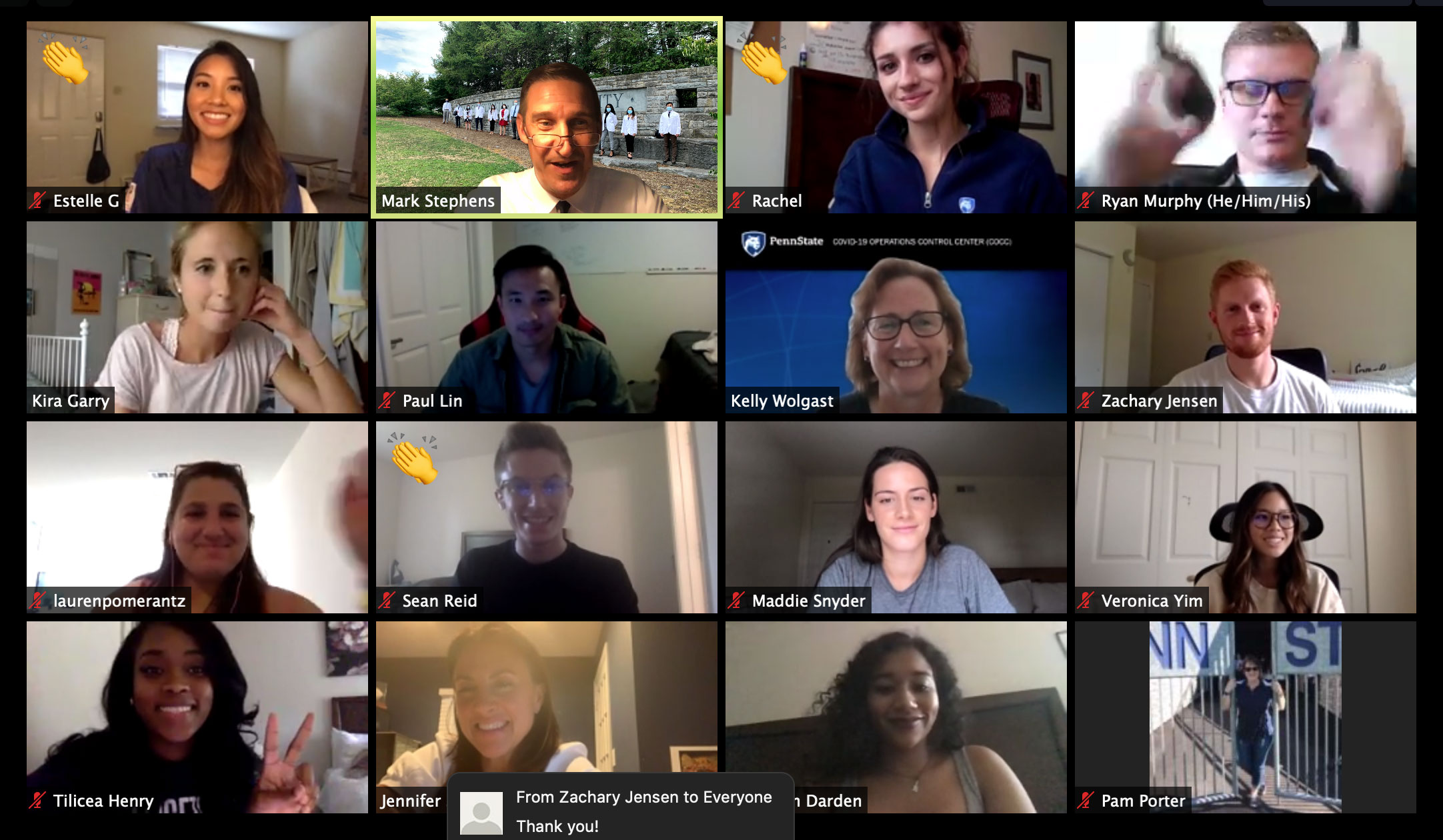College of Medicine students learn disaster preparedness through COVID-19 testimonies

When Dr. Mark Stephens and retired Col. Jake Graham led the fourth EpiCentre disaster-preparedness exercise with first-year medical students at Penn State College of Medicine’s University Park Curriculum in 2019, they could never have imagined that a half year later the world would be dealing with a global pandemic. It made this year’s exercise, conducted from the end of July through early August, all the more real to students.
But if there’s one the retired military colleagues know – it’s that being prepared can serve anyone well when responding to a crisis.
In previous years, the exercise was built around a hypothetical outbreak of measles, tuberculosis or influenza based on Graham’s work with analytic decision gaming in Penn State’s College of Information Sciences and Technology. While planning to pause and reconfigure the exercise this year, Stephens said that the COVID-19 pandemic presented students with a unique opportunity to use real-world problem-solving skills to think about emergency planning in multiple ways.
He invited a group of professionals with multiple areas of expertise, including crisis communicators, government officials, supply chain managers and infectious disease specialists to discuss their experiences in pandemic response with incoming students from Penn State College of Medicine’s MD Class of 2024.
“The ability to engage with high-level professionals actively responding to COVID-19 at the local, state and national level added a layer of realism and gravity to the exercise that students in previous years weren’t able to experience,” Stephens said.
“Since 2017, EpiCentre was used to introduce the first-year students to Centre County health infrastructure, to practice clinical reasoning skills and do team bonding,” Graham said. “When Dr. Stephens suggested using COVID-19 as the backdrop, I was immediately on board. While I am a huge proponent of simulations and exercises, in my experience, there is no substitute for the real thing.”
For their final project, students created a model COVID-19 pandemic response plan for Penn State using an influenza plan developed by the U.S. Department of Health and Human Services as a blueprint. Students used testimonies from professionals representing organizations including Penn State Health, Penn State, Centre County Planning, the Pennsylvania Department of Health and the Pennsylvania Office of Rural Health to build their plan.
Kira Garry, a first-year medical student, learned that teamwork across professions is essential for effective crisis planning. She said that working cooperatively with others to gather relevant expertise and perspectives is a tool she will use beyond the exercise.
“A successful pandemic response plan involves a lot of stakeholders,” Garry said. “We were able to develop a comprehensive strategy because we had the knowledge from a variety of disciplines.”
Stephens said the course is more important now than ever as future pandemics are predicted. He believes that students should be ready to respond to those challenges and feels the COVID-19 pandemic had lessons for everyone to learn.
“By teaching our students to engage with local, state and national partners, we hope they’ll be prepared to respond to future public health emergencies,” Stephens said.
If you're having trouble accessing this content, or would like it in another format, please email the Penn State College of Medicine web department.
